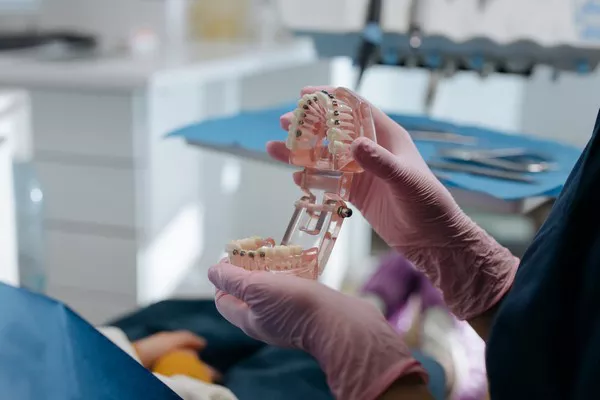Teeth straightening surgery, also known as orthognathic surgery, is a specialized procedure designed to correct severe bite problems, misaligned jaws, and other complex dental issues that cannot be fully addressed with traditional orthodontic treatments like braces or aligners. This article explores the definition of teeth straightening surgery, types of surgeries involved, benefits, risks, eligibility criteria, recovery process, and provides resources for finding qualified professionals.
Defining Teeth Straightening Surgery
Explain the Procedure: Teeth straightening surgery involves surgical procedures aimed at correcting significant dental and skeletal discrepancies that affect the alignment of teeth and jaws. These procedures typically require orthodontic preparation before and after surgery to optimize results. Surgical techniques may include repositioning of the jawbones (orthognathic surgery), removal of impacted teeth, bone grafting, or other necessary adjustments to achieve proper alignment.
Differentiate from Orthodontics: Teeth straightening surgery differs from traditional orthodontic treatments in its scope and objectives. While braces or aligners primarily focus on moving teeth within the existing bone structure, surgery addresses more complex cases that involve altering the underlying bone structure of the jaw. It is often recommended when orthodontic treatments alone cannot adequately correct severe bite issues, facial asymmetry, or skeletal malformations.
Purpose: The primary goal of teeth straightening surgery is to improve both dental function and facial aesthetics by achieving optimal alignment of teeth and jaws. This can enhance bite function, speech clarity, facial balance, and overall oral health.
Types of Teeth Straightening Surgeries
Orthognathic Surgery: This procedure involves repositioning one or both jaws (upper or lower) to correct severe bite problems, such as overbite, underbite, or crossbite. Orthognathic surgery is often performed in conjunction with orthodontic treatment to achieve the best possible outcome.
Impacted Tooth Surgery: Some individuals may require surgery to remove teeth that are impacted (unable to erupt properly) or causing alignment issues in the dental arch.
Other Surgical Procedures: Additional procedures may include bone grafting to augment bone volume for better jaw support or tooth extractions to facilitate orthodontic treatment and alignment.
See Also: Why Do My Teeth Hurt With Retainers
Benefits and Risks
Benefits: Teeth straightening surgery can significantly improve bite function, facial appearance, and overall oral health. By correcting jaw misalignments and dental discrepancies, patients often experience enhanced chewing ability, reduced risk of dental wear and tear, improved speech, and a more harmonious facial profile.
Risks: Like any surgical procedure, teeth straightening surgery carries risks, including infection, nerve damage, bleeding, and prolonged healing time. Patients should discuss potential risks and complications with their oral surgeon and orthodontist before proceeding with surgery.
Eligibility and Considerations
Who Needs Surgery: Candidates for teeth straightening surgery typically have severe malocclusions (bite problems) that cannot be adequately corrected through orthodontics alone. Factors such as facial asymmetry, jaw size discrepancies, and skeletal abnormalities may also warrant surgical intervention.
Consultation and Diagnosis: A thorough evaluation by both an orthodontist and an oral surgeon is essential to determine candidacy for surgery. Diagnostic tools such as X-rays, dental impressions, and 3D imaging may be used to assess the severity of the condition and plan the surgical approach.
Recovery and Aftercare
Post-Surgical Care: After teeth straightening surgery, patients can expect a recovery period that involves managing pain, swelling, and potential dietary restrictions. Follow-up appointments with the surgical team will monitor healing progress and adjust treatment as needed.
Long-Term Maintenance: To maintain the results of surgery, patients may need to wear retainers or other orthodontic appliances as directed by their orthodontist. This helps stabilize the teeth and prevent relapse of dental alignment.
Resources and Next Steps
Finding a Qualified Professional: Seek referrals from your orthodontist or dentist for an oral surgeon experienced in orthognathic surgery. Verify credentials and inquire about their experience with similar cases.
Insurance Coverage: Dental insurance may cover a portion of teeth straightening surgery, depending on the specific policy and medical necessity. Patients should contact their insurance provider to understand coverage details and potential out-of-pocket costs.
Questions to Ask: During consultations with orthodontists and oral surgeons, consider asking about their experience, success rates with similar cases, expected outcomes, recovery expectations, and any alternative treatment options available.
Conclusion
By understanding the role of teeth straightening surgery, patients can make informed decisions about their oral health and pursue treatments that offer both functional and aesthetic benefits. Collaboration between orthodontic and surgical specialists ensures comprehensive care and optimal outcomes for individuals seeking to improve their dental alignment and overall quality of life.
You Might Be Interested In





























